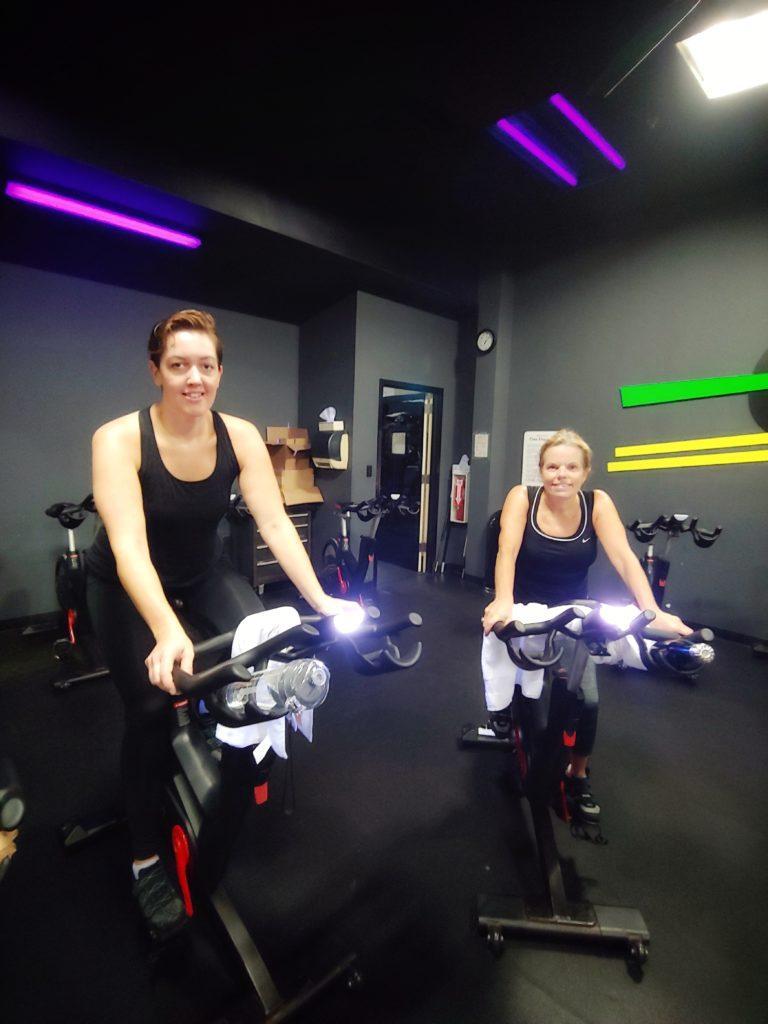
When you get on the bike, the computer will ask you for three things: your age, your weight, and how many hours of cardio you do per week. Based on those three factors, the bike will calculate a number that it considers to be the average amount of power that you can generate in 45 minutes.
Theresa Christensen

Whatever That Is!
If you’ve ever taken a Cycle class at Fitness Incentive, I’m sure you’ve heard the phrase, “Increase your FTW!” But what is an FTW? FTW stands for Functional Threshold Wattage. It’s how the Matrix bikes that we use at FI measure a person’s power potential. When you get on the bike, the computer will ask you for three things: your age, your weight, and how many hours of cardio you do per week. Based on those three factors, the bike will calculate a number that it considers to be the average amount of power that you can generate in 45 minutes. This number is your threshold, basically working at 100% of your effort (also known as the “yellow zone” in the Spindrome).
For example, if the bike gives you an FTW of 135, it is saying that riding 135 watts is you working at 100% effort. However, the computer does not initially know many factors about the rider that can influence the FTW. A 40-year-old 150-pound woman can be at a very different fitness level from another 40-year-old 150-pound woman. This is where we need to make the occasional adjustment.
The best way to do this is to first ride the number that the bike gives you. If you find the ride to be too easy, or you are riding into the red zone very easily, you need to raise that FTW number when you get on the bike. If you are struggling to reach each color zone during every ride, you need to lower the FTW. I suggest going up or down 2-5 points each time until you find your ideal number. You then want to pay attention to your power output, or “watts/kg.” The bikes that we use automatically generate that number at the end of each ride. It’s screen W4 in the ride summary.
Unless you are both the same age, weight, and fitness level, don’t ever compare that last number to your friend or neighbor. It won’t be the same. Size definitely matters when it comes to FTW. To prove this, I did a little experiment with Fitness Incentive member Beth Anderson. Beth is 4’11” tall, and I am 6′ tall. We both do about 5 hours of cardio per week on average. In addition to being 13 inches taller, I weigh 75 pounds more than Beth. When we put in our three factors – age, weight, and cardio hours, Beth’s bike computer generates an FTW of 80, and I get 160.
The Bike Computer LED Readouts for Ride 1, 2 and 3 respectively
According to the bike, Beth’s power threshold is half of mine. We did three rides. (See power meter readings on the above)
Ride 1:
We entered the same factors into the bike and rode the same wattage at 100% (yellow) at the same FTW for 2 minutes. Our power number at the end was the same, 2.0.
Ride 2:
We then input our actual age, weight, and cardio hours and changed the FTW to 130 (a number that was doable for both of us), also for 2 minutes. The bike was smart enough to know that someone of my size should be generating more power. Beth’s watts per kilogram number was 2.6 and mine was 1.6.
Ride 3:
Our third ride was done inputting our personal information at our average FTW number holding 100% (yellow) for 2 minutes. Beth’s number was 2.6 and mine was 2.2. What does this mean? A larger person is expected to generate more power than a smaller person. For a fit person like Beth, 80 is far too low to optimize her 45-minute workout. By increasing her FTW from the recommended 80 to 130, she is burning more calories, getting better mileage, and becoming a stronger cyclist. So I’ll say it again…”Increase your FTW!”
Sponsored Links
About the Author

Theresa Christensen
Theresa Christensen is a certified Cycling Instructor at Fitness Incentive.
